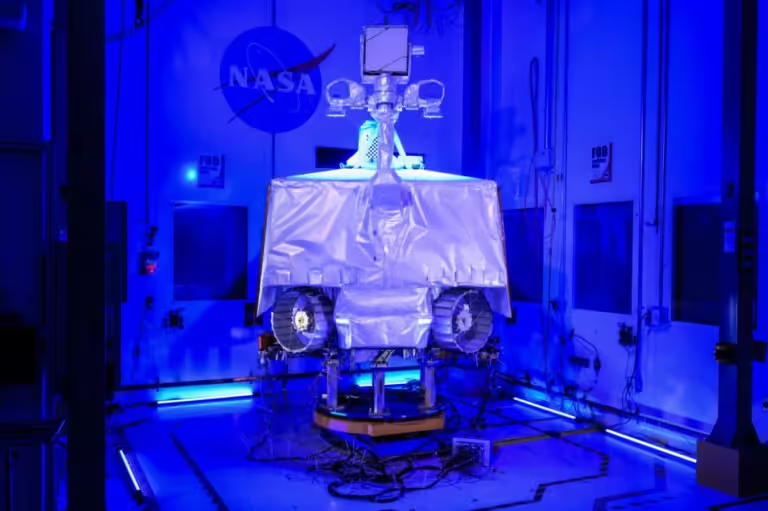
VIPER won’t go to the moon after all
National Aeronautics and Space Administration (NASA)
NASA has announced that a completed rover scheduled for launch to the moon next year will be dismantled due to budgetary issues, leading researchers to question whether the space agency is really committed to landing a crewed spacecraft on the moon in 2026 as it currently claims.
The Volatile Investigation Polar Rover (VIPER) would be sent to the moon’s south pole in September 2025 to search for water ice. The rover, equipped with a drill, would search for subsurface ice in several locations on the moon, including in craters that are permanently in shadow.
But on July 17, NASA announced it was canceling the mission. “Decisions like these are never easy,” Nicola Fox, associate administrator for NASA’s Science Mission Directorate, said in a statement. “But in this case, VIPER’s remaining projected costs would have forced us to cancel or terminate many other missions, so we have made the decision to abandon this particular mission.”
NASA has already spent $450 million on the rover, and canceling it is expected to save only $84 million. NASA says it welcomes “expressions of interest from U.S. industry and international partners” to purchase VIPER, but if this does not occur by August 1, VIPER will be dismantled with the aim of reusing its parts for future missions.
Phil Metzger of the University of Central Florida says the cancellation is a “huge mistake” for NASA, especially since the space agency has ambitious goals of landing humans on the moon’s south pole in 2026 as part of its Artemis program. Plans to use lunar ice as a source of rocket fuel are also in jeopardy. “The drilling rover is an absolutely essential part of the mission,” Metzger says. “It’s certainly going to have some impact on plans for a human mission.”
The cancellation of VIPER could also give China an advantage in lunar resource exploration: The unmanned probes Chang’e-7 and Chang’e-8, scheduled for 2026 and 2028, respectively, are set to head to the lunar south pole to search for water ice.
Grant Tremblay of the Harvard-Smithsonian Center for Astrophysics said the cancellations highlight the budget problems facing NASA and other U.S. government agencies, with the agency receiving just under $25 billion this year, 8.5 percent less funding than requested. “This is a perfect illustration of how NASA’s entire budget is in jeopardy,” Tremblay said. “NASA can’t print money.”
Other NASA missions, including the Chandra X-ray Observatory and the Mars Sample Return mission, which would bring rocks from Mars, are also facing cuts or cancellations due to shrinking budgets. “More bad news is sure to follow,” Tremblay said.
topic:
(TagToTranslate) Moon

